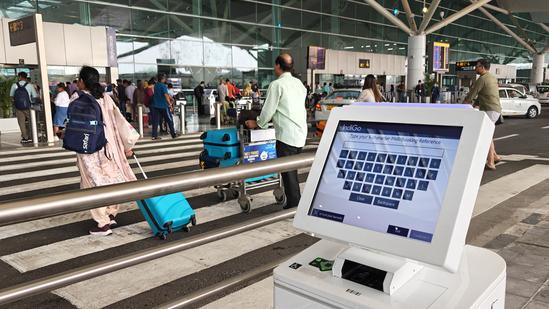
Flight Operations Hit at Delhi Airport Amid Massive Dust Storms
Delhi’s Indira Gandhi International (IGI) Airport faced disruptions in its flight operations on Sunday evening due to intense dust storms that hit the national capital region. The dust storms, which were particularly severe, led to the diversion of at least four flights coming to Delhi between 5 pm and 5:30 pm. The affected flights included two from Jaipur, one from Chandigarh, and one from Amritsar.
According to reports, the airport authorities took the decision to divert the flights due to poor visibility caused by the dust storms. The dust storms, which were quite strong, reduced visibility, making it difficult for pilots to navigate the aircraft safely.
Passengers were advised by the airport authorities to contact their respective airlines for updates on the flight status. The airlines, in turn, informed passengers about the diversion and provided alternative arrangements for those who were booked on the affected flights.
The diversion of flights was a precautionary measure taken by the airport authorities to ensure the safety of passengers and crew. The decision was also taken to avoid any potential risks or hazards that could have arisen due to the poor visibility caused by the dust storms.
The dust storms, which were intense and widespread, also disrupted normal life in the national capital region. The storms, which were caused by a combination of factors including strong winds and dry weather, caused significant disruptions to road traffic and other daily activities.
The Indian Meteorological Department (IMD) had issued a warning about the dust storms earlier in the day, advising people to take necessary precautions to ensure their safety. The IMD had also warned about the potential risks posed by the storms, including reduced visibility and potential damage to crops and other infrastructure.
The impact of the dust storms on flight operations was significant, with at least four flights being diverted to other airports. The diversion of flights led to significant delays and disruptions to the schedules of several airlines, with many passengers facing inconvenience and uncertainty.
Despite the disruptions, the airport authorities and airlines worked together to minimize the impact of the dust storms on flight operations. The authorities took steps to ensure the safety of passengers and crew, while the airlines provided alternative arrangements for those who were affected by the diversion of flights.
The dust storms, which were intense and widespread, also highlighted the need for improved weather forecasting and monitoring systems. The storms, which were caused by a combination of factors including strong winds and dry weather, emphasized the importance of having robust systems in place to predict and mitigate the impact of such events.
In conclusion, the flight operations hit at Delhi’s IGI Airport due to massive dust storms serve as a reminder of the importance of being prepared for such events. The airport authorities and airlines worked together to minimize the impact of the dust storms on flight operations, and passengers were advised to contact their respective airlines for updates on the flight status. The dust storms, which were intense and widespread, also highlighted the need for improved weather forecasting and monitoring systems to predict and mitigate the impact of such events.






